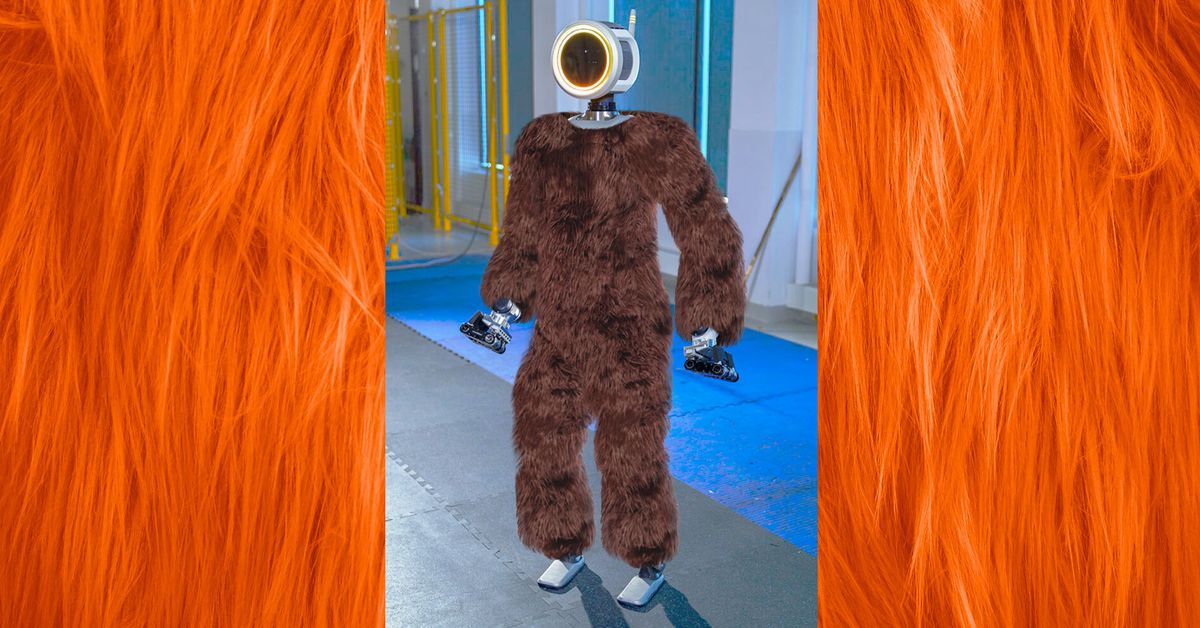Make robots hairy
Source: The Verge added 18th Apr 2024On Wednesday, Boston Dynamics announced the new version of its Atlas robot with a characteristically unsettling video. In it, a humanoid android lifts itself up from the floor by bending its legs backward and then swivels its fathomless void of a head a full 180 degrees like it’s Linda Blair in The Exorcist. The footage is obviously creepy.
In a press release, the company said that it decided to make the new, fully electric Atlas robot move like an undead Cirque du Soleil performer (paraphrasing) because it can more efficiently complete tasks when it is not “constrained by a human range of motion.” I am OKAY with this! Boston Dynamics is doing exciting things with technology!
I do, however, have a novel suggestion for Boston Dynamics: give the robot hair. Watch the video again, but this time, imagine Mx. Atlas with a lush, flowing mane. Does that make you feel better?
Okay, press that play button one more time, but now, imagine the bot with a healthy coat of brightly colored fur, Furby-style. Are you feeling more relaxed? I am.
Karl MacDorman, the associate dean at Indiana University’s Luddy School of Informatics, Computing, and Engineering, who researches the uncanny valley, told me that the reason people find robots like the Atlas creepy is because “it moves in a way that violates all human expectations.”
“Imagine the same robot, but you put human skin on it,” MacDorman said. “It would be much worse because our expectations of human behavior would be even stronger.”
But what about giving Atlas hair? “For this robot, it would be quite incongruous because we generally wouldn’t expect a human to be covered in fur unless maybe it’s a caveman,” MacDorman said. “It would probably make it more uncanny, but it might be better than skin.”
What about an ape android covered in hair? “If you can have an ape-like robot that is moving around in strange ways, it would probably be less disturbing,” MacDorman said. In his research about nonhuman animals and the uncanny valley, he found that people still find synthetic creatures uncanny, but the feeling is more acute when it comes to human-like robots.
MacDorman emphasized that what really makes Atlas creepy is not the hair, or lack thereof, but the inhuman movement. Masahiro Mori, the scientist responsible for the theory of the uncanny valley, created two separate graphs for the uncanny valley: one for still objects and another for moving things. That feeling of uncanniness, MacDorman told me, “is much more pronounced for moving objects.”
The academic literature on hairy robots is sadly limited — and the results are mixed. In a paper published in 2019, scientists compared people’s reactions to robots with plastic exteriors, wooden exteriors, and fur exteriors. Researchers found that “people rated the plastic robot significantly lower on perceived warmth as compared to the wooden and furry robots,” but also, “people did not rate the three robots differently in terms of competence or discomfort.”
Meanwhile, a study published in 2022 titled “Designing Man’s New Best Friend: Enhancing Human-Robot Dog Interaction through Dog-Like Framing and Appearance” noted that Boston Dynamics’ (fur-free) dog-like robot “received praise for its epic dancing moves online but when deployed in New York for street surveillance, caused concern among residents who were disturbed by these robots.”
Would fur have made any difference? The researchers had 29 participants play with Aibo, a robot dog manufactured by Sony. When they added fur to Aibo, they were surprised to find that it “inhibited social reactions like smiling and laughing when Aibo was framed as a puppy,” adding:
One explanation may be that the fur suit did not cover the entire Aibo, but only part of its body. This may have resulted in a somewhat “uncanine” effect, although this was not reflected in subjective reports.
If the researchers had only asked me, I could’ve shared a lesson that’s just as true in robotics as in so many other areas of life: half measures (partially furred robot dogs) will not do (induce social reactions like smiling and laughing).
No, if robot makers want to inspire affinity instead of repulsion with their creations, they need to accept what the creative industry has long understood: hair sells, the more the better. Need proof? Just look at the most beloved monster of the last 10 years:
Photo by Len Redkoles / NHLI via Getty Images
Iconic.
media: 'The Verge'
Related posts
Notice: Undefined variable: all_related in /var/www/vhosts/rondea.com/httpdocs/wp-content/themes/rondea-2-0/single-article.php on line 88
Notice: Undefined variable: all_related in /var/www/vhosts/rondea.com/httpdocs/wp-content/themes/rondea-2-0/single-article.php on line 88
Related Products
Notice: Undefined variable: all_related in /var/www/vhosts/rondea.com/httpdocs/wp-content/themes/rondea-2-0/single-article.php on line 91
Warning: Invalid argument supplied for foreach() in /var/www/vhosts/rondea.com/httpdocs/wp-content/themes/rondea-2-0/single-article.php on line 91
